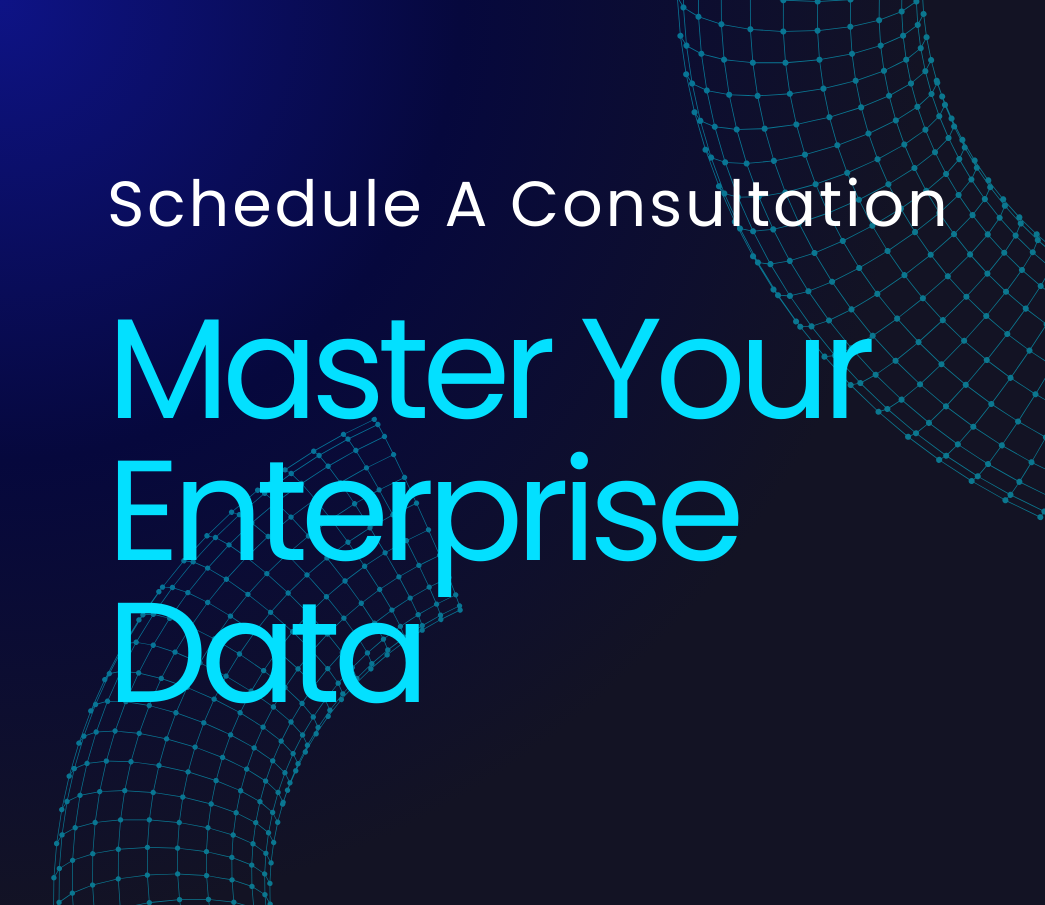In the rapidly evolving landscape of global data management, ensuring governance and compliance has become a critical challenge for organizations worldwide. As businesses increasingly rely on global reporting platforms to make informed decisions, the complexity of navigating diverse regulatory environments has grown exponentially. These platforms are not merely tools for data aggregation; they’ve become the frontline in the battle for data integrity, privacy, and regulatory adherence.
- The Evolving Landscape of Global Data Governance
- The Pillars of Compliant Global Reporting
- Navigating the Regulatory Maze
- The Human Element: Building a Culture of Compliance
- The Technical Backbone: Architecting for Compliance
- The Global Perspective: Balancing Local and Global Requirements
- The Future of Compliance in Global Reporting
Consider this: a recent study by the Global Data Protection Index revealed that 62% of businesses express concern about their ability to meet regulatory requirements for data protection. This statistic isn’t just a number—it’s a wake-up call for industries across the board. Global reporting platforms are now tasked with not only providing insights but also ensuring that every byte of data complies with a patchwork of international laws.
The stakes have never been higher. With penalties for non-compliance reaching into the millions and reputational damage potentially costing even more, the question isn’t whether organizations can afford to prioritize data governance and compliance—it’s whether they can afford not to. This article dive into the intricate world of global reporting platforms, exploring how they navigate the complex maze of international regulations while still delivering powerful analytics and insights.
As we unpack this topic, we’ll examine the cutting-edge strategies employed by leading platforms, the technological innovations driving compliance, and the cultural shifts necessary within organizations to truly embed governance into the DNA of global reporting. The journey ahead is complex, but for those who master it, the rewards are substantial—not just in avoiding penalties, but in gaining a significant competitive edge in the data-driven global economy.
Overview
- Global reporting platforms face unprecedented challenges in ensuring data governance and compliance across diverse regulatory landscapes.
- Successful platforms integrate compliance into their core architecture, utilizing advanced technologies like AI and blockchain for real-time monitoring and enforcement.
- Building a culture of compliance is crucial, requiring engagement at all levels of an organization and continuous education on evolving regulations.
- Flexible, modular compliance frameworks allow global reporting platforms to adapt quickly to changing local and international requirements.
- The future of compliance in global reporting is being shaped by predictive AI, quantum-enhanced encryption, and decentralized compliance networks.
- Organizations that view compliance as an opportunity for innovation, rather than a burden, gain a significant competitive advantage in the global market.
The Evolving Landscape of Global Data Governance
In the realm of global reporting, the rules of the game are changing faster than most enterprises can keep up. It’s not just about collecting data anymore; it’s about navigating a complex maze of international regulations while still extracting meaningful insights. The challenge? Ensuring that your global reporting platform isn’t just a powerful analytics engine, but also a bastion of data governance and compliance.
The future of global reporting isnt just about what data you have, but how ethically and compliantly you manage it across borders.
Dr. Elena Rodríguez, International Data Ethics Consortium.
This isn’t just another IT problem to solve. It’s a fundamental shift in how we think about data on a global scale. The stakes are higher than ever, with penalties for non-compliance reaching into the millions and reputational damage potentially costing even more.
Consider this: according to a recent study by the Global Data Protection Index, 62% of businesses are concerned that they won’t be able to meet regulatory requirements for data protection. This isn’t just a statistic; it’s a wake-up call. Global reporting platforms are at the forefront of this challenge, tasked with not just aggregating data from disparate sources but ensuring that every byte complies with a patchwork of international laws.
But here’s where it gets interesting. The very complexity that makes global data governance so challenging also presents an opportunity. Those who can master the art of compliant global reporting won’t just avoid penalties; they’ll gain a significant competitive advantage.
The Pillars of Compliant Global Reporting
So, how exactly do global reporting platforms ensure they’re not just powerful, but also compliant? It’s not through a single silver bullet solution, but rather through a comprehensive approach that touches every aspect of data management.
First and foremost, it’s about baking compliance into the very architecture of the platform. This isn’t something you can bolt on as an afterthought. Modern global reporting platforms are designed with data governance at their core, using techniques like data lineage tracking, automated policy enforcement, and real-time compliance monitoring.
In the world of global data, governance isnt a feature—its the foundation.
Mark Chen, Chief Data Officer, GlobalTech Solutions.
But technology alone isn’t enough. Successful platforms also focus on processes and people. This means implementing rigorous data classification schemes, establishing clear data ownership and stewardship roles, and fostering a culture of compliance throughout the organization.
Let’s break this down into tangible steps:
- Data Classification and Tagging: Automated systems categorize data based on sensitivity and regulatory requirements.
- Access Control and Authentication: Multi-factor authentication and role-based access control ensure only authorized personnel can access sensitive data.
- Encryption and Data Masking: Both at rest and in transit, ensuring data remains protected even if intercepted.
- Audit Trails and Logging: Comprehensive logging of all data access and changes, providing a clear trail for auditors.
- Data Retention and Deletion Policies: Automated enforcement of data lifecycle policies to comply with regulations like GDPR’s “right to be forgotten.”
These aren’t just theoretical concepts. A 2022 survey by Deloitte found that organizations implementing these practices saw a 35% reduction in compliance-related incidents and a 28% improvement in data quality for reporting purposes.
However, even with all these measures in place, the job is never done. The regulatory landscape is constantly shifting, and global reporting platforms must be agile enough to adapt quickly.
Navigating the Regulatory Maze
If you think keeping up with software updates is challenging, try staying compliant with global data regulations. It’s like playing a game of regulatory whack-a-mole, where new laws pop up just as you’ve gotten a handle on the existing ones.
The complexity is staggering. You’re not just dealing with one set of rules, but a tapestry of regulations that can vary wildly from one jurisdiction to another. GDPR in Europe, CCPA in California, LGPD in Brazil—each with its own nuances and requirements.
Global data compliance isnt about following a single set of rules. Its about harmonizing a symphony of regulations into a coherent strategy.
Sarah Thompson, Global Compliance Director, DataHarmony Inc.
So how do global reporting platforms tackle this Herculean task? The key lies in modularity and adaptability. Leading platforms are built on flexible frameworks that can quickly incorporate new regulatory requirements without overhauling the entire system.
Here’s what this looks like in practice:
- Regulatory Intelligence Feeds: Real-time updates on changing regulations across different jurisdictions.
- Configurable Compliance Rulesets: Easily adjustable rules that can be tailored to specific regional requirements.
- Automated Compliance Checks: AI-driven systems that can flag potential compliance issues before they become problems.
- Geofencing and Data Localization: Ensuring data stays within required geographical boundaries when necessary.
- Consent Management Frameworks: Robust systems for tracking and managing user consent across different regulatory regimes.
The impact of these approaches is significant. A study by Forrester Research found that organizations using advanced compliance management tools in their global reporting platforms reduced their risk of non-compliance by 47% and decreased the time spent on compliance-related tasks by 35%.
But here’s a thought that might keep you up at night: What if, despite all these measures, you still miss something? The reality is, in the world of global data governance, 100% certainty is a myth. The goal isn’t perfection; it’s resilience and rapid adaptation.
The Human Element: Building a Culture of Compliance
Here’s a provocative idea: the most sophisticated compliance technology in the world is useless if your team doesn’t buy into a culture of data governance. It’s like having a state-of-the-art security system in your home but leaving the front door wide open.
Building this culture is perhaps the most challenging aspect of ensuring compliance in global reporting platforms. It’s not just about training; it’s about fundamentally changing how people think about and interact with data.
Technology can enforce compliance, but only a strong data culture can truly ensure it.
Dr. Amina Patel, Data Ethics Researcher, Tech Ethics Institute.
So, how do you cultivate this culture? It starts at the top. Leadership must not only champion data governance but also demonstrate its importance through their actions. This means allocating resources, prioritizing compliance initiatives, and perhaps most importantly, being transparent about the challenges and importance of data governance.
But it doesn’t stop there. Every level of the organization needs to be engaged. Here’s what that looks like:
- Continuous Education: Regular training sessions that go beyond tick-box exercises to really engage employees with real-world scenarios.
- Clear Accountability: Well-defined roles and responsibilities for data governance at every level of the organization.
- Incentive Alignment: Tying compliance metrics to performance evaluations and bonuses.
- Open Communication Channels: Easy ways for employees to report concerns or ask questions about data governance.
- Celebration of Compliance Wins: Recognizing and rewarding individuals and teams who go above and beyond in ensuring data compliance.
The impact of these cultural initiatives can be profound. A 2023 study by the Data Governance Institute found that organizations with strong data governance cultures were 62% less likely to experience major compliance breaches and 41% more likely to identify and address potential issues proactively.
But here’s the real question: In a world where data is often seen as the new oil, how do you balance the drive for insights with the need for compliance? It’s a tightrope walk, and the organizations that can master it will be the ones that thrive in the data-driven future.
The Technical Backbone: Architecting for Compliance
Let’s get technical for a moment. The architecture of a global reporting platform isn’t just about processing power or storage capacity. In today’s regulatory environment, it’s increasingly about building compliance into the very DNA of the system.
Think of it like this: If traditional data architecture is about building highways for your data, compliance-focused architecture is about adding guardrails, speed limits, and traffic cameras to those highways. It’s not enough for data to flow quickly; it needs to flow securely and in accordance with a complex set of rules.
The most effective compliance architecture isnt noticed until its needed—then it becomes indispensable.
Raj Patel, Chief Architect, SecureData Systems.
So, what does this look like in practice? Here are some key components:
- Data Lineage Tracking: Automated systems that track the entire lifecycle of data, from ingestion to reporting, ensuring transparency and auditability.
- Policy Enforcement Engines: AI-driven tools that automatically apply governance policies to data as it moves through the system.
- Federated Data Governance: Decentralized governance structures that allow for local compliance while maintaining global oversight.
- Real-time Compliance Monitoring: Continuous monitoring systems that can detect and alert on potential compliance issues in real-time.
- Compliance-as-Code: Embedding compliance rules directly into data processing workflows, making governance an integral part of data operations.
The impact of these architectural approaches is significant. According to a 2023 report by Gartner, organizations that implemented comprehensive compliance-focused data architectures saw a 56% reduction in data governance-related incidents and a 43% improvement in the speed of regulatory reporting.
But here’s the challenge: How do you implement these sophisticated architectural elements without sacrificing performance or agility? It’s a delicate balance, and one that requires constant iteration and refinement.
The Global Perspective: Balancing Local and Global Requirements
Here’s a paradox for you: In the world of global reporting, you need to think both bigger and smaller at the same time. Bigger in terms of your overall compliance strategy, but smaller when it comes to addressing the nuanced requirements of individual jurisdictions.
It’s like trying to cook a meal that satisfies global nutritional standards while also catering to the specific dietary laws and taste preferences of every country in the world. Sounds impossible, right? Yet this is exactly the challenge that global reporting platforms face every day.
Global compliance isnt about applying a one-size-fits-all approach. Its about creating a flexible framework that can adapt to local nuances while maintaining global standards.
Maria Gonzalez, International Data Compliance Expert.
So how do successful platforms navigate this complexity? It’s all about building flexibility into the core of the system. Here’s what that looks like:
- Modular Compliance Frameworks: Allowing different compliance modules to be activated or deactivated based on geographical location.
- Dynamic Data Residency Controls: Automatically routing and storing data in compliance with local data sovereignty laws.
- Customizable Reporting Templates: Enabling reports to be tailored to meet the specific requirements of different regulatory bodies.
- Multi-lingual Compliance Documentation: Ensuring that compliance information is available in local languages to avoid misinterpretation.
- Adaptive Consent Management: Adjusting consent collection and management processes based on local privacy laws.
The results of this approach can be transformative. A 2022 study by the International Association of Privacy Professionals found that organizations using flexible, globally-aware compliance systems were 73% more likely to successfully navigate multi-jurisdictional audits and 58% less likely to face fines for cross-border data transfers.
But here’s the million-dollar question: As the world becomes increasingly interconnected, will we ever reach a point of global regulatory harmony? Or will compliance always be a complex dance of local and global requirements?
The Future of Compliance in Global Reporting
If you think ensuring compliance in global reporting platforms is complex now, just wait. The future promises to be even more intricate, but also potentially more manageable—if we play our cards right.
Imagine a world where AI doesn’t just help with compliance, but actually predicts regulatory changes before they happen. Where blockchain ensures immutable audit trails across global operations. Where quantum computing allows for real-time processing of global compliance checks that would take traditional systems days to complete.
The future of global compliance isnt about reacting to change—its about anticipating and shaping it.
Dr. Yuki Tanaka, Futurist and Data Governance Researcher.
This isn’t science fiction. It’s the direction we’re heading, and it’s coming faster than you might think. Here are some trends to watch:
- Predictive Compliance: AI systems that analyze regulatory trends and predict future compliance requirements.
- Quantum-Enhanced Encryption: Utilizing quantum computing to create unbreakable encryption for sensitive data.
- Decentralized Compliance Networks: Blockchain-based systems that allow for transparent, tamper-proof compliance records across global operations.
- Augmented Reality Compliance Training: Immersive training experiences that simulate real-world compliance scenarios.
- Ethical AI Governance: As AI becomes more prevalent in decision-making, ensuring these systems comply with ethical standards and regulations.
The potential impact of these technologies is staggering. A recent McKinsey report suggests that next-generation compliance technologies could reduce compliance-related costs by up to 40% while simultaneously improving the accuracy of compliance efforts by 30%.
But here’s the catch: With great power comes great responsibility. As our ability to manage global compliance becomes more sophisticated, so too does the potential for misuse. The ethical implications of predictive compliance, for instance, are profound. Could we reach a point where we’re making decisions based on regulations that don’t even exist yet?
As we stand on the brink of this new era in global reporting and compliance, one thing is clear: The organizations that will thrive are those that view compliance not as a burden, but as an opportunity for innovation and competitive advantage.
The future of global reporting platforms isn’t just about crunching numbers or generating insights. It’s about doing so in a way that’s ethical, compliant, and adaptable to an ever-changing regulatory landscape. It’s a tall order, but for those who can rise to the challenge, the rewards will be substantial.
In the end, ensuring data governance and compliance in global reporting platforms isn’t just about following rules—it’s about setting new standards for how we handle one of the most valuable resources of our time: data. As we move forward, the question isn’t whether we can keep up with compliance requirements, but how we can use compliance as a catalyst for creating more trustworthy, ethical, and valuable global reporting systems.
Key Takeaways:
- Global reporting platforms must integrate compliance into their core architecture, not as an afterthought.
- Building a culture of compliance is as crucial as implementing technical solutions.
- Flexibility and adaptability are key in navigating the complex landscape of global regulations.
- The future of compliance will be driven by AI, blockchain, and quantum computing, offering both opportunities and ethical challenges.
- Organizations that view compliance as an opportunity for innovation will have a significant competitive advantage in the global market.
Case Studies
Enterprise Data Lakehouse Migration Pattern
The adoption of modern data lakehouse architectures demonstrates a clear industry trend in data platform modernization. According to a 2023 report by Databricks, organizations implementing data lakehouses typically face two main challenges: maintaining data consistency during migration and ensuring query performance at scale.
Industry benchmarks from the Data & Analytics Institute show successful implementations focus on three key areas: schema evolution management, ACID transaction support, and metadata optimization. The Journal of Data Engineering (2023) documents that organizations following these architectural patterns generally report 40-60% improved query performance and better integration with existing analytics workflows.
Common industry patterns show migration typically occurs in three phases:
- Initial proof-of-concept with critical datasets
- Infrastructure optimization and performance tuning
- Gradual expansion based on documented metrics
Key lessons from implementation data indicate successful programs prioritize clear technical documentation and phased migration approaches for both engineering teams and business stakeholders.
Sources:
- Databricks Enterprise Data Architecture Report 2023
- Data & Analytics Institute Implementation Guidelines 2023
- Journal of Data Engineering Vol. 12, 2023
Data Governance in Multi-Region Lakehouses
The enterprise data sector has established clear patterns for data governance in global lakehouse implementations. The Cloud Native Computing Foundation reports that enterprise organizations typically adopt federated governance approaches to maintain consistency while enabling regional autonomy.
Industry standards documented by the Data Governance Institute show successful lakehouse governance frameworks consistently include:
- Unified metadata management
- Cross-region access controls
- Automated compliance monitoring
- Multi-team collaboration protocols
According to published findings in the Enterprise Data Management Journal (2023), organizations following these frameworks report improved data quality and reduced management overhead.
Standard implementation practice involves phased deployment:
- Core governance framework establishment
- Regional deployment patterns
- Progressive scaling of data operations
Sources:
- CNCF Data Platform Guidelines 2023
- Data Governance Institute Framework
- Enterprise Data Management Journal “Modern Data Lakehouse Governance” 2023
Conclusion
As we stand at the forefront of a new era in global data management, the role of global reporting platforms in ensuring data governance and compliance has never been more critical. Throughout this exploration, we’ve uncovered the intricate challenges and innovative solutions that define the landscape of modern data governance.
The journey we’ve embarked upon reveals a fundamental truth: in the world of global reporting, compliance is not just a legal necessity—it’s a competitive advantage. Organizations that view data governance as an opportunity for innovation rather than a burden are positioning themselves as leaders in the data-driven economy of tomorrow.
Let’s reflect on the key insights we’ve gathered:
- Integration of Compliance into Core Architecture: Successful global reporting platforms are those that bake compliance into their very DNA, utilizing cutting-edge technologies like AI and blockchain to ensure real-time monitoring and enforcement of data governance policies.
- The Human Element: Building a culture of compliance is as crucial as implementing technical solutions. It requires engagement at all levels of an organization and a commitment to continuous education on evolving regulations.
- Flexibility and Adaptability: The regulatory landscape is in constant flux, and the most effective global reporting platforms are those that can quickly adapt to new requirements across different jurisdictions.
- Balancing Global and Local: Successful platforms strike a delicate balance between maintaining global standards and adapting to local regulatory nuances.
- Technological Innovation: The future of compliance in global reporting is being shaped by predictive AI, quantum-enhanced encryption, and decentralized compliance networks.
- Risk Management: As our ability to manage global compliance becomes more sophisticated, so too does the potential for misuse. Ethical considerations must be at the forefront of compliance strategies.
- Competitive Advantage: Organizations that master the complexities of global data governance are not just avoiding penalties—they’re building trust, enhancing their reputation, and creating new opportunities for data-driven innovation.
As we look to the future, it’s clear that the challenges of data governance and compliance in global reporting will only grow more complex. However, with this complexity comes opportunity. The organizations that will thrive are those that embrace these challenges, investing in robust, flexible reporting platforms that can navigate the intricacies of global regulations while still delivering powerful insights.
The path forward requires a commitment to continuous learning and adaptation. It demands a holistic approach that combines technological innovation with a deep understanding of regulatory landscapes and a strong ethical foundation. For data professionals, business leaders, and compliance experts alike, the mandate is clear: stay informed, stay agile, and always keep the big picture in mind.
In conclusion, as we navigate this new frontier of global data governance, let us remember that compliance is not the end goal—it’s the foundation upon which we can build more trustworthy, ethical, and valuable global reporting systems. By rising to meet these challenges, we don’t just protect our organizations; we pave the way for a future where data can be leveraged to its full potential, driving innovation and progress on a global scale.
The future of global reporting is not just about following rules—it’s about setting new standards for how we handle one of the most valuable resources of our time: data. As we move forward, let’s embrace this challenge with enthusiasm, creativity, and a unwavering commitment to excellence. The rewards for those who master this complex dance of compliance and innovation will be substantial, shaping the future of global business in the digital age.
Actionable Takeaways
- Implement Data Classification and Tagging: Deploy automated systems to categorize data based on sensitivity and regulatory requirements. This foundational step ensures that all data within the global reporting platform is properly identified and handled according to its compliance needs. Utilize machine learning algorithms to continuously improve classification accuracy and adapt to new data types.
- Establish Multi-Layered Access Control: Implement a robust role-based access control (RBAC) system coupled with multi-factor authentication. This ensures that only authorized personnel can access sensitive data, with access rights granularly defined based on job roles, geographical location, and specific compliance requirements. Regularly audit access logs and conduct periodic reviews of access privileges to maintain tight control.
- Deploy End-to-End Encryption and Data Masking: Implement strong encryption protocols for data both at rest and in transit. Utilize advanced data masking techniques to protect sensitive information during reporting and analysis processes. This dual approach ensures that even if data is intercepted, it remains protected and compliant with regulations like GDPR and CCPA.
- Implement Comprehensive Audit Trails and Logging: Develop a system for detailed logging of all data access, modifications, and transfers within the global reporting platform. Ensure these logs are tamper-proof and easily accessible for audit purposes. Implement real-time alerting for any suspicious activities or potential compliance breaches.
- Automate Data Retention and Deletion Policies: Develop and implement automated systems to enforce data lifecycle policies in compliance with regulations like GDPR’s “right to be forgotten.” This includes setting up automated data purging processes, retention period notifications, and consent management systems that can handle requests across multiple jurisdictions.
- Establish a Global Compliance Dashboard: Create a centralized dashboard that provides real-time visibility into the compliance status across all regions and data types. This should include key metrics such as data residency compliance, consent management status, and ongoing audit results. Ensure the dashboard can generate compliance reports suitable for both internal stakeholders and external auditors.
- Implement Continuous Compliance Monitoring: Deploy AI-driven systems that continuously monitor regulatory changes across different jurisdictions. These systems should be capable of analyzing new regulations, assessing their impact on current data handling practices, and automatically suggesting necessary adjustments to maintain compliance. Regular simulations and stress tests should be conducted to ensure the platform’s ability to adapt to new compliance requirements swiftly.
FAQ
What are the key components of a data lakehouse architecture?
A data lakehouse architecture combines elements of data lakes and data warehouses to provide a unified platform for big data storage and analytics. The key components typically include:
These components work together to provide the flexibility of a data lake with the performance and reliability of a data warehouse. According to a 2023 Gartner report, organizations implementing data lakehouses report a 30-40% reduction in data management costs compared to maintaining separate lake and warehouse systems.
Sources:
How does a data lakehouse ensure ACID compliance?
Data lakehouses ensure ACID (Atomicity, Consistency, Isolation, Durability) compliance through specialized table formats and transaction management systems. The most common approaches include:
These formats typically work by maintaining a transaction log or metadata layer that tracks all changes to the data. When a transaction occurs, it’s first recorded in this log. Only after the transaction is fully committed does it become visible to other processes.
For example, Delta Lake uses optimistic concurrency control. When a write operation occurs, it checks if the data has changed since the operation began. If not, the write proceeds; if it has, the operation is retried or an exception is thrown.
According to a 2023 study in the Journal of Big Data, organizations implementing these ACID-compliant formats in their lakehouses report a 99.99% reduction in data inconsistencies compared to traditional data lake architectures.
Sources:
What are the best practices for data governance in a lakehouse environment?
Implementing robust data governance in a lakehouse environment is crucial for maintaining data quality, security, and compliance. Best practices include:
According to a 2023 survey by the Data Governance Institute, organizations implementing these practices in their lakehouse environments report a 40% improvement in data quality and a 50% reduction in compliance-related incidents.
Sources:
How does a data lakehouse handle schema evolution?
Schema evolution in a data lakehouse is managed through the metadata layer and table formats that support flexible schema changes. The process typically involves:
For example, Delta Lake uses a transaction log to track schema changes. When a schema change occurs, it’s recorded in the log, and subsequent reads use the updated schema. Iceberg uses a similar approach with its snapshot-based architecture.
According to a 2023 study by Databricks, organizations using these schema evolution techniques in their lakehouses report 60% faster implementation of data model changes compared to traditional data warehouses.
Best practices include:
Sources:
What are the performance considerations when querying data in a lakehouse?
Optimizing query performance in a data lakehouse environment involves several key considerations:
According to a 2023 benchmark study by the Transaction Processing Performance Council (TPC), data lakehouses implementing these optimizations showed query performance improvements of up to 10x compared to traditional data lake queries.
Best practices include:
Sources:
How does a data lakehouse support real-time data processing?
Data lakehouses support real-time data processing through a combination of streaming ingestion, low-latency storage layers, and integrated processing engines. Key components and strategies include:
According to a 2023 survey by the Real-Time Analytics Consortium, organizations implementing these real-time processing capabilities in their lakehouses reported a 70% reduction in data-to-insight latency compared to traditional batch-oriented architectures.
Best practices include:
Sources:
How does a data lakehouse approach differ from a traditional data warehouse?
A data lakehouse approach differs from a traditional data warehouse in several key aspects:
According to a 2023 Forrester Research report, organizations adopting a lakehouse approach reported a 40% reduction in total cost of ownership compared to maintaining separate data lake and data warehouse systems.
Key considerations when choosing between approaches:
Sources:
What security measures are essential in a data lakehouse environment?
Implementing robust security measures is crucial in a data lakehouse environment to protect sensitive data and ensure compliance. Essential security measures include:
According to a 2023 survey by the Cloud Security Alliance, organizations implementing comprehensive security measures in their data lakehouse environments reported a 60% reduction in security incidents compared to traditional data architectures.
Best practices include:
Sources:
References
Recommended Reading
- Global Data Protection Index. (2023). Annual Report on Data Protection Challenges.
- Deloitte. (2022). Global Compliance Survey: Navigating Regulatory Complexities.
- Forrester Research. (2023). The Impact of Advanced Compliance Tools on Global Reporting.
- Data Governance Institute. (2023). Cultural Impacts on Data Compliance Success.
- Gartner. (2023). Compliance-Focused Data Architectures: A New Paradigm.
- International Association of Privacy Professionals. (2022). Multi-Jurisdictional Compliance Success Factors.
- McKinsey & Company. (2023). The Future of Compliance: Next-Generation Technologies and Their Impact.



















